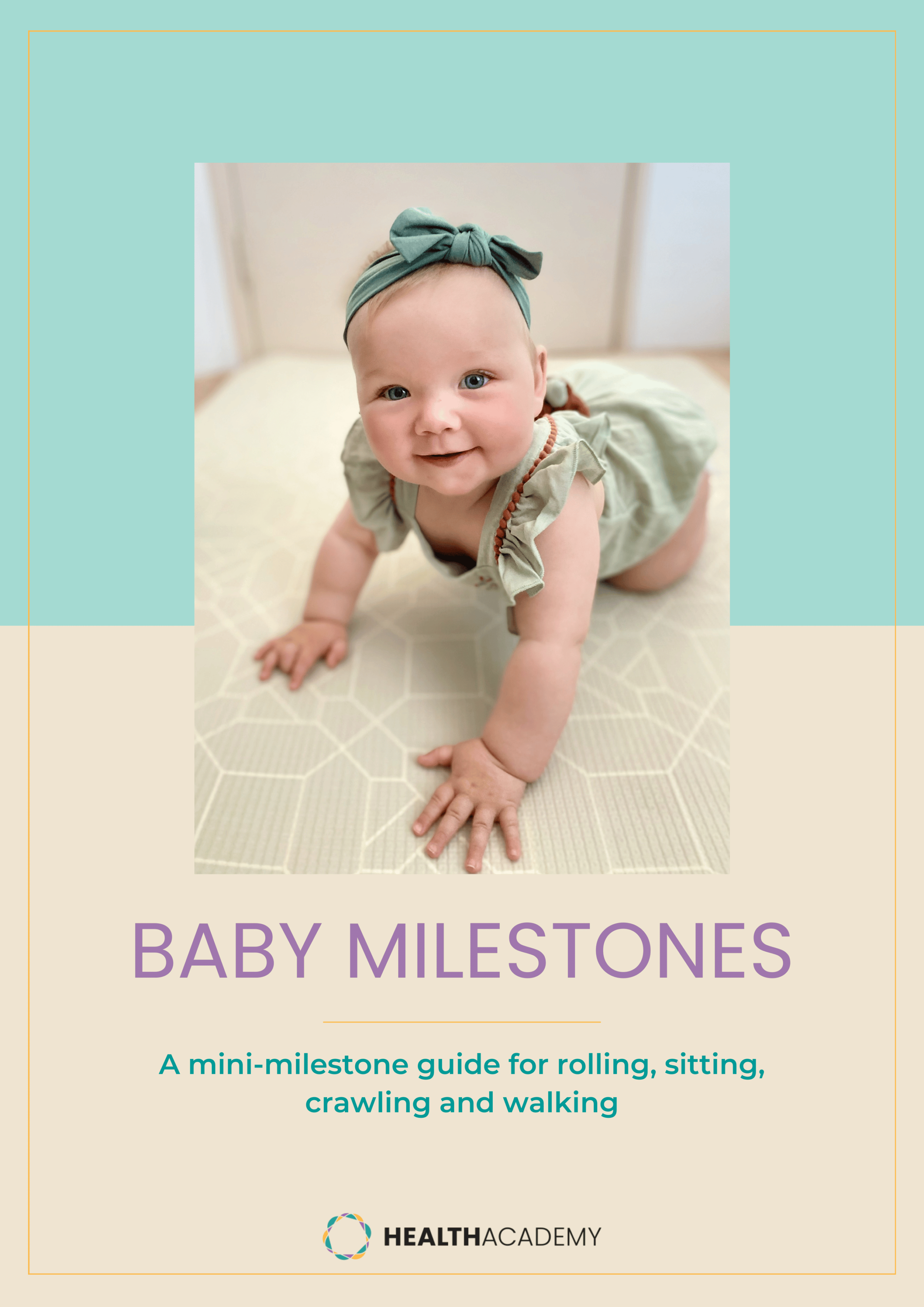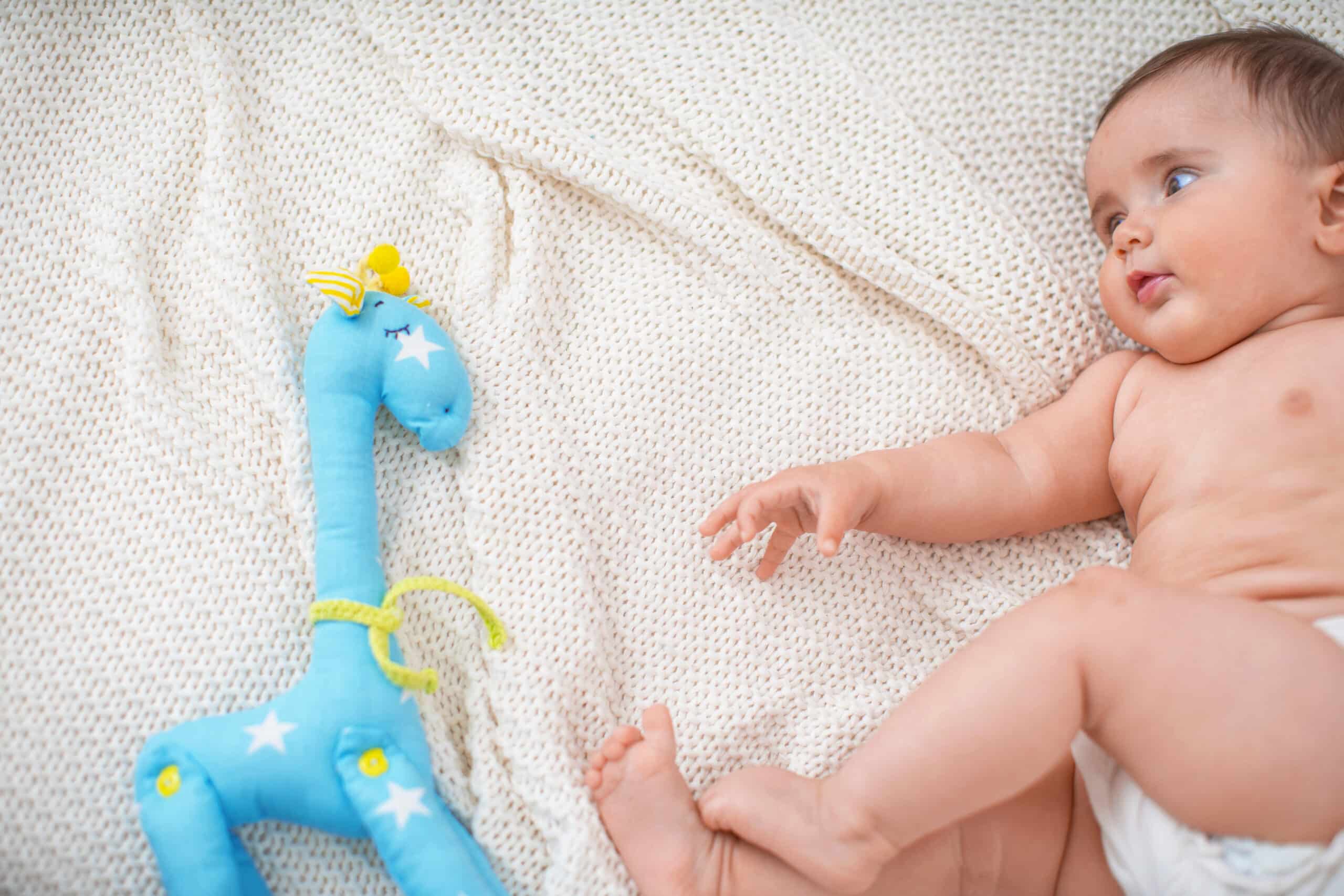Topic
Rolling
Rolling is a really helpful skill our babies learn that allows them to change position all by themselves and explore their body and the world. If you are looking for accurate, evidence-based information on when rolling should happen and how you can support it, you're in the right place.

Stop guessing and stressing about your child's development!
Get our monthly science-based tips and activities to support your child's development with purposeful play.
Rolling
FAQs
Rolling is a really helpful skill that our babies learn that allows them to change position all by themselves!
But how old are babies when they roll over? When will my baby roll over?
Your baby may roll accidentally in the first few months but it should become an intentional roll anytime between the ages of 4 and 8ish months.
Some babies roll tummy to back first, others back to tummy.
Sometimes bubs roll onto their tummy first, others learn to roll out of tummy time before getting back into it. Some babies will love to roll and choose to do it often, others may not enjoy it as much. Every baby is different and this is okay.
Every baby develops at a slightly different rate and this is normal. Download the free Baby Milestones guide which shows all the beautiful mini milestones leading up to rolling
I think it’s so helpful to be encouraging our babies to move independently. Once your baby learns to roll, they have choice! I think it’s important to help our babies play and explore with a wide variety of movements and positions and rolling is one of these.
If they aren’t choosing to roll yet, you can make sure to continue to encourage rolling with some of our targeted rolling play activities, or to simply help them to roll every time they want to move into a different position rather than picking them up and placing them. Keep showing them how it’s done, this helps them learn to do it themselves too.
We have over 60 targeted play activities for babies in the "pre-rolling stage" in the Baby Play Academy, come join us for all the fun!
This is a normal developmental phase your baby will go through while they are learning to roll.
However, once they are rolling to their side, reaching across their body, or twisting their hips... it is time to stop swaddling to sleep and get those arms out for sleep. I know it feels daunting but this is important for their safety as per SIDS recommendations.
It is ok.
As babies grow and develop they become very active and learn to roll around in the cot.
Lot's of little ones roll onto their tummy when they are asleep. If they can roll both tummy to back and back to tummy, then you can be assured that even as you continue to put them on the back at the start of sleep time, they can find their own natural sleeping position. By this stage it is not necessary to wake during the night to turn baby over to the back position.
Do not use any devices designed to keep baby in a particular sleep position. These can be dangerous and they are not recommended.
If they cannot roll back off their tummy you will need to help them. Often when babies first learn to roll to their tummy this can be a very wakeful phase - they are not consciously rolling onto their tummy, they are not really awake, they are consolidating a skill.
Here are some things to try during wake time to help speed up the consolidation process and help your little one to learn to roll both ways:
1. Give bub heaps of rolling practice in the day & free floor time to hopefully reduce the night practice (or the length of the phase)
2. Practice rolling tummy to back in the day – if bubs stuck on their tummy instead of just picking them up, try rolling them off (let them do most of the hard work!)
3. Put them down on their side in the day so they can practice choosing to roll forward to tummy or back onto back
4. Remember bub needs opportunity to develop skills in all positions, front, back, side, sit… so vary it up
5. Call your mum friends and band together about how tough it is over
Articles
Rolling
My newborn is rolling onto their side – is that normal?
SIDS and the AAP recommends always putting your baby down for sleep on their back, so when your baby starts to roll it can be confusing to know what to do when your baby ends up […]
Read More »When should I stop swaddling my baby?
When do I need to stop swaddling my bubs arms in for sleep? Firstly – this includes the love to dream swaddles with arms in guys! According to SIDS Australia swaddling is a useful strategy that […]
Read More »



